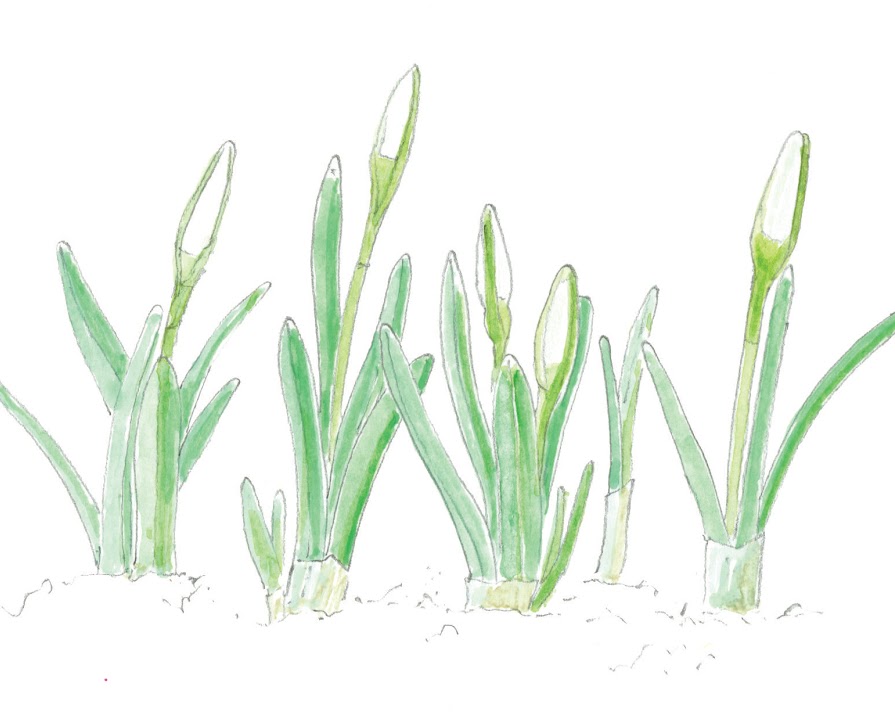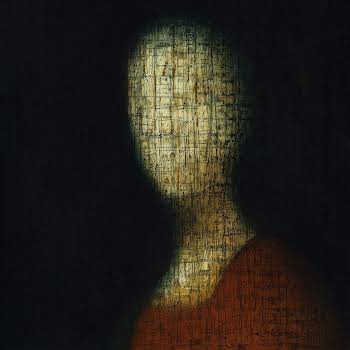
By IMAGE
09th Jan 2019
09th Jan 2019
Naturalist and illustrator Emma Mitchell has suffered from depression for 25 years. She walks in the countryside, reflecting on how nature affects her mood.
I always feel some relief at the arrival of the New Year. The weeks that stretch out between Christmas and the beginning of spring can be the darkest, both meteorologically and neurologically, yet the 1st of January is a mental milestone of sorts. Around half of winter has passed, I’ve got through it without succumbing to depression’s darkest pit, and with that heartening thought comes a few days of a fresher feeling, a lighter mood.
As my dog Annie and I walk up to the wood on one of the first days of the year, I know that snowdrops are emerging in the patch of land owned by a neighbour to the left of the path. I peer through the fence but the place where the snowdrops usually appear is too far from where I am standing to be able to see whether I’m looking at blades of grass or the new shoots. There’s a small gate through the hedge leading to this fenced-off area, and I steal through. There they are, just a few centimetres tall, unfeasibly verdant and juicy-looking. This is a watershed find in my year: the shoots of the earliest flowers. It is like the first curry after weeks without that spicy warmth, the first cup of tea drunk outside in the tentative March sun. These snowdrops are the botanical equivalent of Star Wars Episode IV: A New Hope.

Soon after my snowdrop sighting, the weather and the landscape become resolutely wet, cold and colourless. Daylight hours are still short, light levels are low, mood-buoying neurotransmitters ebb away, energy levels slump. After several days of this weather it becomes difficult to move. I cower in the cottage, my mind weighed down by a blanket of malaise and immobility. I long for the sun. I listen to the audiobook of An Enchanted April, and the passages that describe the wisteria in bloom and the flower-filled garden bathed in sunlight are a balm. I sleep a great deal, like a melancholic hedgehog.
As the month progresses, the sky clears and the temperature falls. Puddles freeze over, mud hardens so that it thuds as I walk on it, and any remaining woodland fruit is blackened by ice crystals as they pierce and burst the cells of its flesh. This kind of scimitar-sharp winter’s day with a pale, low sun in delicate watercolour skies can clear my mind of its stupor. I’m grateful for the invigorating shift in isobars, and my cheeks sting in the iced air as Annie and I tread the familiar paths in the wood. I hear more long-tailed tits in the tops of the young beeches and glimpse them flitting among the dry coppery leaves. We trace the border of the wood from the corner where the hazel grows along the rough hedge of blackthorn that skirts its edge. To our right, beneath the beeches, the whitish chalk-rich soil protrudes in places, and the wild carrot and hedge-parsley seed heads, grasses and a tangle of denuded wild roses make a patchwork of grey and pale brown. Here and there are pools of frost.
Knapweed, a perennial relative of the cornflower, grows here and in June and July forms an intense purple haze of flowers beloved by hoverflies, bees and butterflies. On warm days the flattish, frilly-fringed dark mauve blooms are a good place to observe the state of local insect diversity. Now, in January, their desiccated seed heads that I drew in October still stand.

First extracted in 2019 from The Wild Remedy: How Nature Mends Us – A Diary by Emma Mitchell (Michael O’Mara Books, €16.99), out now. Illustration by Emma Mitchell.























